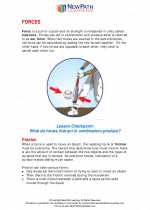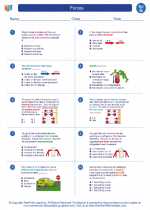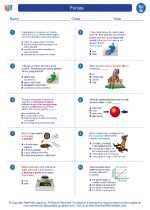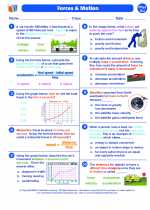Forces
Forces are a crucial part of the physical world and play a fundamental role in determining the behavior and motion of objects. In science, a force is described as a push or pull acting upon an object, resulting from the object's interaction with another object.
Types of Forces
There are several types of forces that are commonly encountered, including:
- Gravity: The force that attracts two objects toward each other. It is the force that makes objects fall to the ground and keeps the planets in orbit around the sun.
- Friction: The force that opposes the motion of an object when it is in contact with another object or surface.
- Normal Force: The force exerted by a surface to support the weight of an object resting on it.
- Tension: The force that is transmitted through a string, rope, cable, or wire when it is pulled tight by forces acting from opposite ends.
- Applied Force: The force applied to an object by a person or another object.
Study Guide
When studying forces, it is important to understand the following key concepts:
- Newton's Laws of Motion: Familiarize yourself with Newton's three laws of motion, which form the foundation of classical mechanics.
- Free Body Diagrams: Learn how to represent the forces acting on an object using diagrams, which can help in analyzing the motion of the object.
- Calculating Forces: Understand how to calculate the net force acting on an object by considering the individual forces and their directions.
- Applications of Forces: Explore real-world applications of forces, such as the design of structures, the motion of vehicles, and the behavior of natural phenomena.
By mastering these concepts, you will gain a thorough understanding of forces and their role in the physical world, setting a strong foundation for further exploration of physics and related fields.
.






